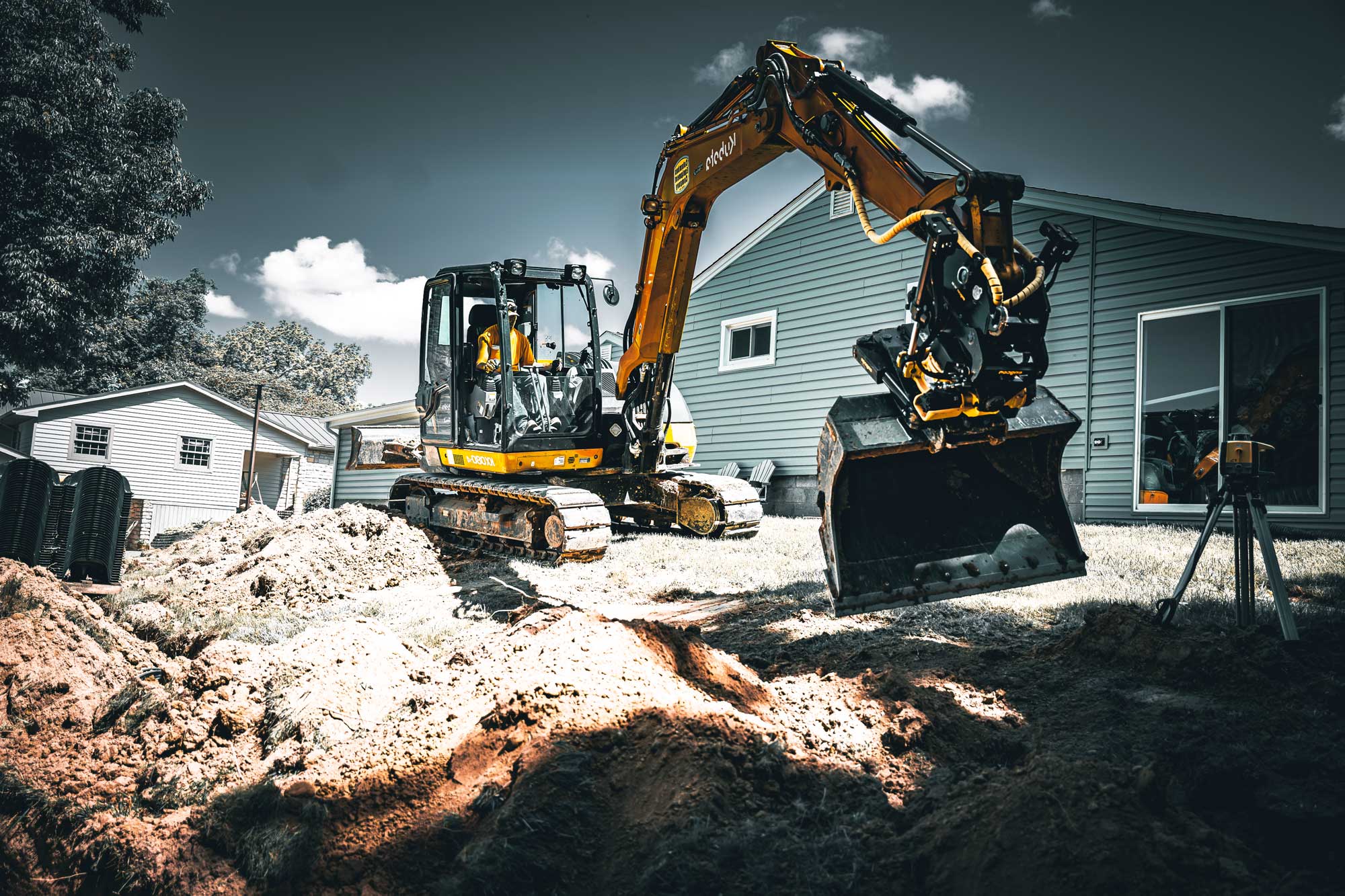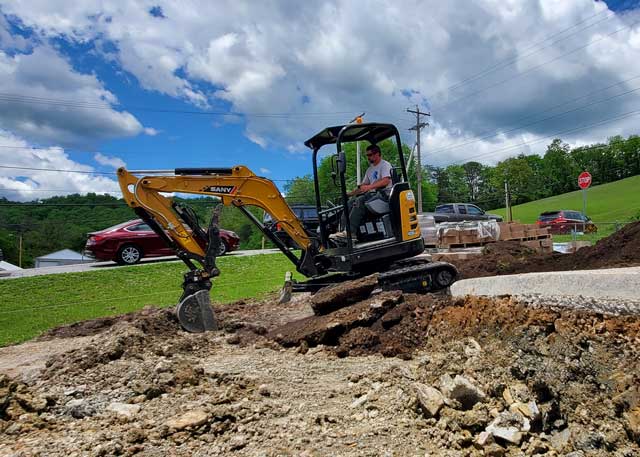Residential Excavating Ohio - Specialized Excavation for Ohio Residences
Residential Excavating Ohio - Specialized Excavation for Ohio Residences
Blog Article
Introducing the Art of Excavation: Pro Tips for Safe and Productive Excavating
As dirt is transformed and earth is relocated, the details of excavation disclose themselves, requiring a keen understanding of tools, soil composition, safety and security protocols, and ecological factors to consider. The competence required to navigate these elements efficiently can suggest the difference in between an effective excavation job and a prospective catastrophe.
Value of Correct Tools
To guarantee the safety and security and performance of any excavation job, using the suitable equipment is vital. Excavation projects vary in scope and complexity, ranging from small domestic landscape design work to massive building tasks.
Excavators are fundamental pieces of machinery in any kind of digging operation. These flexible devices come in numerous dimensions to fit various task requirements. Small excavators are excellent for smaller jobs, while bigger excavators take on more comprehensive tasks efficiently. Backhoes are another crucial devices kind, integrating the features of a loader and an excavator in one device. They are valuable for tasks calling for flexibility and maneuverability.
Besides excavators, various other crucial devices includes dump trucks, plates, and excavators. Unload vehicles are necessary for getting rid of and transferring excavated materials, while trenchers are made use of for digging deep and narrow trenches. Bulldozers succeed in jobs that call for pushing huge quantities of dirt or particles. By investing in the ideal equipment, excavation jobs can be completed safely, on schedule, and with precision.
Comprehending Dirt Composition
A detailed grasp of soil composition is fundamental for implementing excavation tasks with precision and safety. Comprehending the different kinds of soil is essential as it directly impacts excavation techniques, equipment option, and general job performance. Dirt structure normally includes four main elements: sand, silt, clay, and raw material. Each component has special buildings that affect how soil reacts to excavation procedures.
Sand particles are the biggest and offer good drainage yet use little communication. Silt fragments are smaller sized than sand however larger than clay, offering moderate drain and communication. Clay fragments are the tiniest and supply high communication but inadequate drainage. Raw material, such as rotting plant material, affects soil fertility and security.
Before beginning excavation, carrying out soil examinations to identify its make-up and qualities is vital. This details helps in picking the appropriate tools, carrying out security procedures, and developing excavation strategies tailored to the certain dirt problems - dump truck companies in ohio. By recognizing dirt composition, excavation specialists can boost project results while ensuring safety and adherence to best techniques
Security Procedures and Protocols
Understanding soil structure is the keystone upon which safety measures and protocols for excavation tasks are built, guaranteeing the health of employees and the success of the undertaking. When it involves safety during excavation, there are a number of vital procedures that must be carried out to mitigate risks and avoid crashes.
Most importantly, before any kind of digging begins, a thorough examination of the website need to be carried out to identify any prospective hazards such as below ground energies, unsteady dirt conditions, or nearby frameworks that might present a danger. It is critical to have a proficient person oversee the excavation process to make certain that all safety and security methods are complied with strictly.
Additionally, all employees associated with click this the excavation has to be appropriately learnt safe digging methods and the correct operation of tools. Individual safety tools (PPE) such as construction hats, high exposure clothes, handwear covers, and security boots should be worn at all times to reduce the risk of injuries. septic ohio. why not try here Regular safety and security conferences and toolbox talks ought to also be carried out to keep all employees notified about prospective threats and enhance secure job methods. By adhering to these security measures and procedures, excavation projects can be completed efficiently and without case.
Effective Excavation Preparation
When getting started on an excavation task, meticulous planning is crucial to ensure performance, safety and security, and effective results. Efficient excavation planning involves numerous essential actions that are vital for the smooth implementation of the task.
Once the website assessment is complete, the following step is to create a clear timeline and timetable for the excavation tasks. This includes identifying the sequence of tasks, equipment needs, and manpower allotment. Appropriate organizing aids stay clear of hold-ups and makes sure that the project stays on track.

In addition, communication amongst all employee is paramount during the planning phase. Clear instructions, routine updates, and efficient coordination are vital for a successful excavation job. By investing time and initiative in precise planning, excavation teams can considerably boost efficiency, reduce dangers, and achieve successful outcomes.

Managing Ecological Considerations
With enhancing emphasis on environmental sustainability in building practices, managing ecological factors to consider has become a vital facet of excavation tasks. Excavation activities have the possible to affect the surrounding environment through dirt erosion, debris overflow, habitat disturbance, and contamination of water resources. To reduce these risks, it is necessary to carry out finest methods that prioritize environmental management.

Furthermore, proper waste administration is critical to avoid soil and water contamination. Executing treatments for the disposal of harmful materials, recycling of waste materials, and lessening making find more use of dangerous chemicals can dramatically minimize the ecological influence of excavation projects. By incorporating these techniques right into excavation planning and execution, building companies can make sure that their jobs are not just safe and productive however additionally environmentally accountable.
Verdict
In conclusion, mastering the art of excavation needs an extensive understanding of proper equipment, dirt structure, security actions, and reliable preparation. By complying with these guidelines and considering environmental aspects, excavations can be conducted securely and successfully. It is critical to focus on safety and security and performance in every digging project to make sure successful outcomes.
As soil is transformed and planet is relocated, the ins and outs of excavation disclose themselves, demanding a keen understanding of devices, dirt make-up, security protocols, and environmental considerations.To guarantee the safety and effectiveness of any excavation project, using the suitable tools is paramount.A comprehensive grasp of soil structure is fundamental for implementing excavation tasks with accuracy and safety. Recognizing the various types of soil is crucial as it directly impacts excavation approaches, equipment choice, and total project performance. By comprehending dirt make-up, excavation professionals can enhance project results while making certain security and adherence to ideal methods.
Report this page